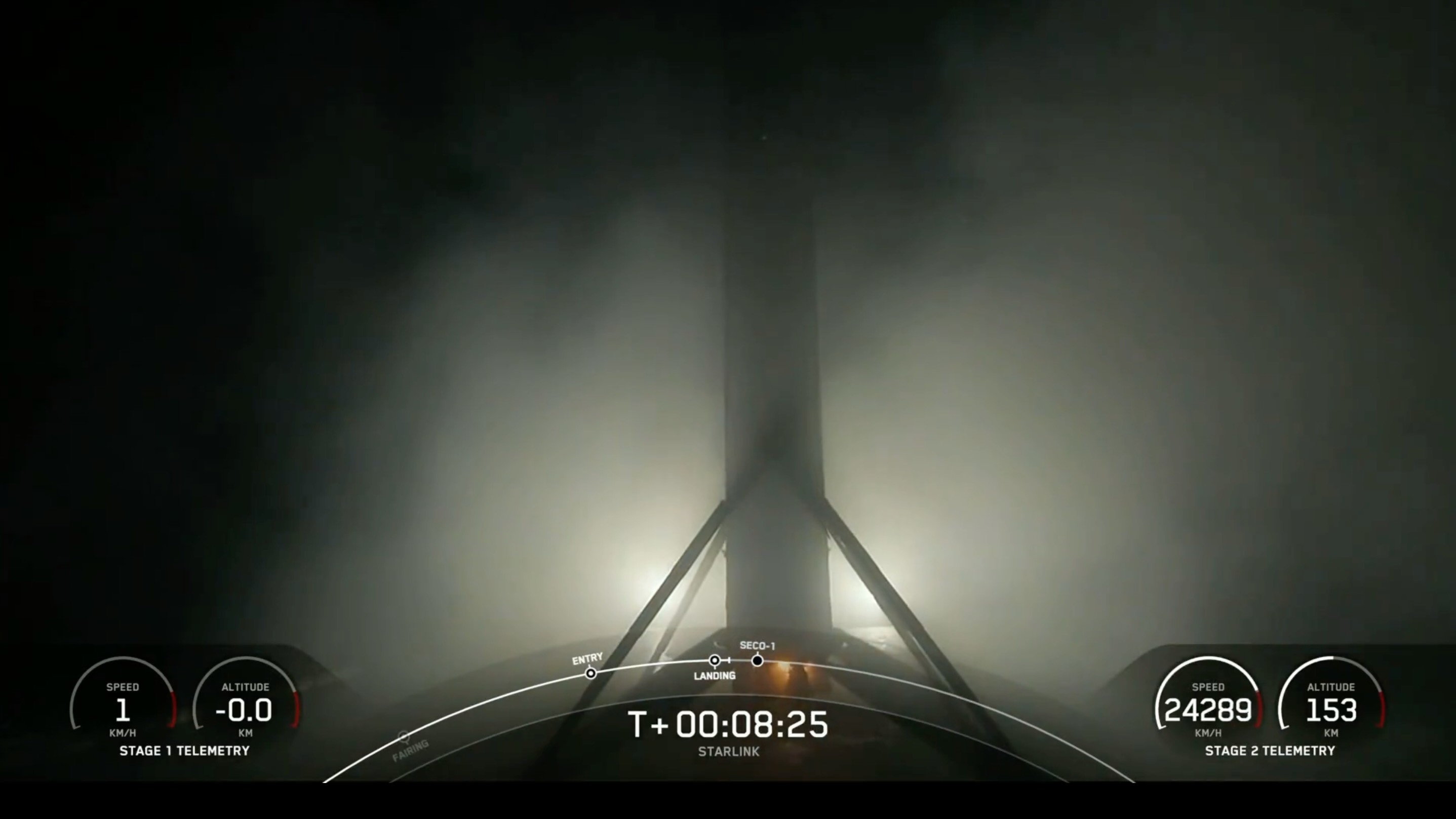SpaceX launched 22 more of its Starlink internet satellites tonight (Aug. 6) and landed the returning rocket on a ship at sea.
A Falcon 9 rocket topped with the Starlink spacecraft lifted off from Florida's Cape Canaveral Space Force Station tonight at 10:41 p.m. EDT (0241 GMT on Aug. 7).
The Falcon 9's first stage came back to Earth as planned, landing about 8.5 minutes after liftoff on the SpaceX droneship A Shortfall of Gravitas, which was stationed in the Atlantic Ocean.
Related: Starlink satellite train: How to see and track it in the night sky

It was the fourth launch and landing for this particular booster, according to a SpaceX mission description.
The Falcon 9's upper stage continued carrying the 22 Starlink satellites to low Earth orbit (LEO), where they will be deployed about 65 minutes after liftoff.
SpaceX has now launched about 4,900 Starlink spacecraft to date, according to satellite tracker and astrophysicist Jonathan McDowell. More than 4,500 of those satellites are currently functional.
Get the Space.com Newsletter
Breaking space news, the latest updates on rocket launches, skywatching events and more!
SpaceX plans to loft many more Starlink craft to LEO over the coming weeks and months. The company has approval to deploy 12,000 satellites and has applied for permission to launch 30,000 more on top of that.
Editor's note: This story was updated at 11:30 p.m. ET on Aug. 6 with news of successful launch and booster landing.
Join our Space Forums to keep talking space on the latest missions, night sky and more! And if you have a news tip, correction or comment, let us know at: community@space.com.

Michael Wall is a Senior Space Writer with Space.com and joined the team in 2010. He primarily covers exoplanets, spaceflight and military space, but has been known to dabble in the space art beat. His book about the search for alien life, "Out There," was published on Nov. 13, 2018. Before becoming a science writer, Michael worked as a herpetologist and wildlife biologist. He has a Ph.D. in evolutionary biology from the University of Sydney, Australia, a bachelor's degree from the University of Arizona, and a graduate certificate in science writing from the University of California, Santa Cruz. To find out what his latest project is, you can follow Michael on Twitter.









